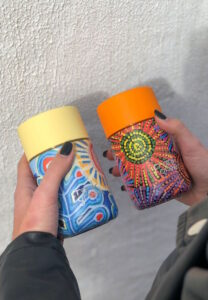Why and how to protect your next brand collaboration
Think of the buzz around Pokémon x Van Gogh, the creativity of Frank Green x The Warlukurlangu Art Centre, or the cultural impact of Michael Jordan x Nike. These unlikely yet ingenious collabs showcase how partnerships can transform brands or captivate audiences (or both!).

Successful collaborations can redefine market positions, but for long-term effectiveness? Yep, you guessed it (we are lawyers after all) – you need a well-crafted agreement.
In this blog, we explore why collaboration agreements are crucial for businesses involved in brand partnerships.
1. Establishing Clear Expectations and Responsibilities
Align your Goals
A robust collaboration agreement outlines the objectives, scope, and anticipated outcomes of the partnership. This clarity ensures that all parties share the same vision and expectations from the outset, helping to prevent awkward discussions later on.
Everyone has a Part to Play
Clearly defining each party’s roles, responsibilities, and contributions reduces misunderstandings and ensures accountability, paving the way for a smoother collaboration.
2. Protecting Intellectual Property and Assets
IP Ownership & Use
Specify the ownership rights for intellectual property, trademarks, copyrights, and any proprietary information involved. This protects each party’s innovations and creative assets.
Shhh! Keeping Secrets Safe
Include confidentiality clauses to safeguard sensitive information, such as business strategies and customer data, ensuring that trade secrets remain secure.
3. Managing Financial Arrangements and Risks
Who’s Paying What?
Outline financial commitments, including investments, revenue sharing models, and cost-sharing arrangements. This way you dodge those “I thought you were covering those costs” debates by keeping everything transparent and dispute-free.
Risk Allocation
Address potential risks and liabilities with clear indemnification responsibilities. This prepares both parties for unforeseen events, so you don’t have to scramble when the unforeseen becomes seen!
4. Ensuring Compliance with Regulations and Standards
Playing by the Rules
Ensure the agreement adheres to industry regulations, licensing requirements, and legal standards. This mitigates legal risks and ensures that all practices are compliant.
Doing the Right Thing
Commit to upholding ethical business practices that align with both parties’ corporate values and industry norms. Business relationships, like all relationships, are built on trust!
5. Effective Communication and Decision-Making
Keep Communication Flowing
Define communication channels and update frequencies. This way, you’ll keep the communication flowing and make decisions faster, keeping your project on point!
Goalposts and Timelines
Set clear timelines, deliverables, and performance metrics. This helps keep tabs on progress and make sure your collaboration is smashing those goals.
Conclusion
Collaboration agreements aren’t just legal paperwork, they’re the secret blueprint for thriving partnerships. They spell out expectations, protect your creative assets, handle finances, set legal guidelines, ensure compliance, and keep communication on track. #chefskiss
If you need a collaboration agreement in place, reach out to us at hello@legalite.com.au.

